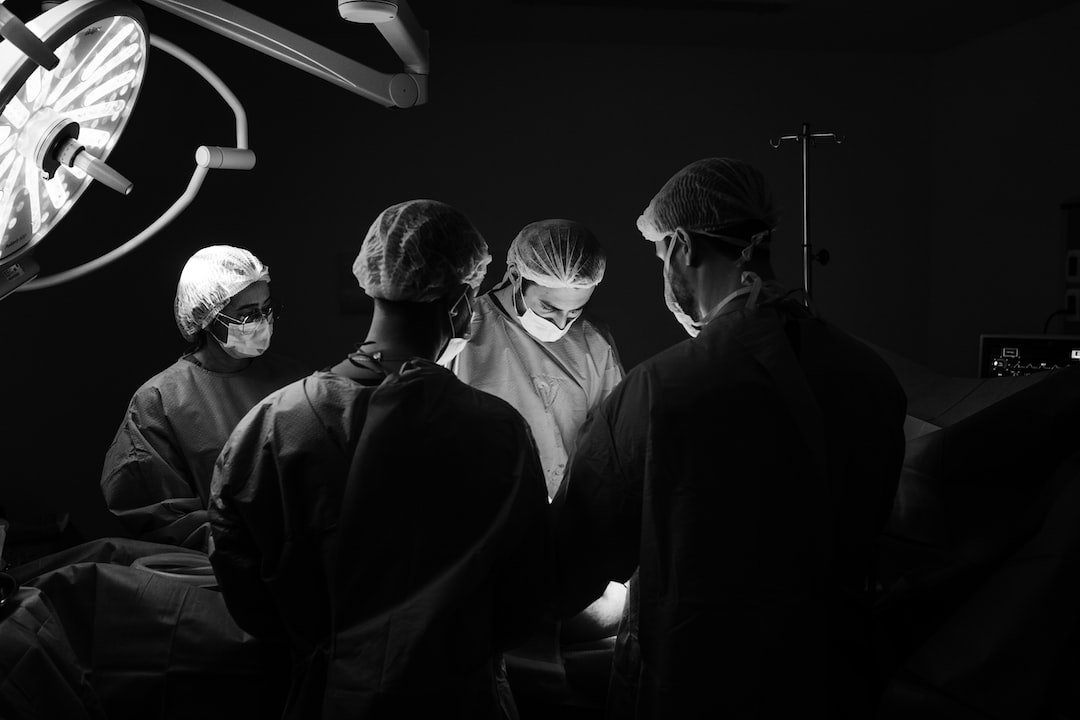Home Organ Transplantation Surgery Organ Transplantation Complications Organ Transplantation Success Rate Organ Transplantation Rejection
The Miracle of Lung Transplantation: Restoring Hope, One Breath at a Time
Category : Organ transplantation surgery | Sub Category : Lung transplantation surgery Posted on 2023-07-07 21:24:53

The Miracle of Lung Transplantation: Restoring Hope, One Breath at a Time
Introduction:
Lung transplantation surgery has changed the field of medicine, offering hope to thousands of people with lung diseases. A healthy lung from a deceased donor is used in this procedure. In this post, we will look at the journey of lung transplantation from the selection criteria to the surgical procedure and post-operative care.
The selection criteria for candidates.
Not everyone with end-stage lung disease is a good candidate for lung transplantation. The selection process involves a series of medical evaluations to make sure that the procedure will be safe and successful for the patient. Factors such as age, overall health, organ availability, and the severity of the lung disease are taken into consideration by a multidisciplinary transplant team.
The surgical procedure is performed.
Lung transplantation surgery is a complex procedure that requires expertise. Depending on the patient's condition and the estimated life expectancy of the lung transplant, the surgery can be performed as a single-lung or double-lung transplant.
The surgeon will make an incision in the chest and remove the lung. The healthy lung from the donor is connected to the recipient's blood vessels. The surgical team makes sure that the lung transplant is a success and that there are no problems.
Recovery and post-op care.
A patient's road to recovery begins after the surgery. Close monitoring and care are needed during this critical phase. The patient will be put on medication to prevent rejection of the lung transplant. Lung function tests, regular check-ups, and other tests are conducted to detect any signs of rejection or other problems early on.
Lung transplant success and challenges
Lung transplantation has improved the quality of life for many people. This procedure has its challenges. Long waiting lists and increased mortality rates for patients waiting for a lung transplant are caused by the shortage of donor lungs. Post-transplant care is challenged by the risk of infections and organ rejection.
Future perspectives
New lung transplant drugs and techniques hold great promise, and are expected to be used more and more in the future. These innovations aim to improve outcomes by increasing the donor pool.
Conclusion
Patients suffering from end-stage lung diseases can now have lung transplants. This procedure restores hope and transforms lives. The future holds immense potential for further enhancing the success rates and expanding access to organ transplantation as medical advances push the boundaries of the procedure.
This post is only for informational purposes and should not be considered as medical advice. If you are considering lung transplantation surgery, please consult with a qualified healthcare professional.
Leave a Comment:
SEARCH
Recent News
- Zurich, Switzerland has long been known for its exceptional quality of life, beautiful surroundings, and high standard of healthcare. In contrast, the Russian healthcare system has faced various challenges and struggles over the years. Let's delve into the differences between the healthcare systems in Zurich, Switzerland, and Russia.
- Navigating Medical Device Regulations in Zurich, Switzerland
- In the bustling city of Zurich, Switzerland, finding healthy fast food options can be a challenge. However, with a little exploration and curiosity, you can discover some fantastic spots that offer nutritious and delicious meals on the go.
- YouTube Content Creation: Exploring the Russian Healthcare System
- In today's digital age, YouTube has become a powerful platform for content creators to share their knowledge and expertise with a global audience. One particular niche that has been gaining traction on YouTube is the creation and translation of content related to medical devices regulation.
- Are you looking for tips on creating YouTube content about healthy fast food options and the importance of translation in reaching a wider audience? Let's dive into how you can combine these two aspects to create engaging and informative videos for your channel.
- Exploring the Russian Healthcare System: Insights from a YouTube Channel
- Navigating the Regulatory Landscape for Medical Devices on YouTube
READ MORE
4 days ago Category : organb

Zurich, Switzerland has long been known for its exceptional quality of life, beautiful surroundings, and high standard of healthcare. In contrast, the Russian healthcare system has faced various challenges and struggles over the years. Let's delve into the differences between the healthcare systems in Zurich, Switzerland, and Russia.
Read More →4 days ago Category : organb

Navigating Medical Device Regulations in Zurich, Switzerland
Read More →4 days ago Category : organb

In the bustling city of Zurich, Switzerland, finding healthy fast food options can be a challenge. However, with a little exploration and curiosity, you can discover some fantastic spots that offer nutritious and delicious meals on the go.
Read More →4 days ago Category : organb
